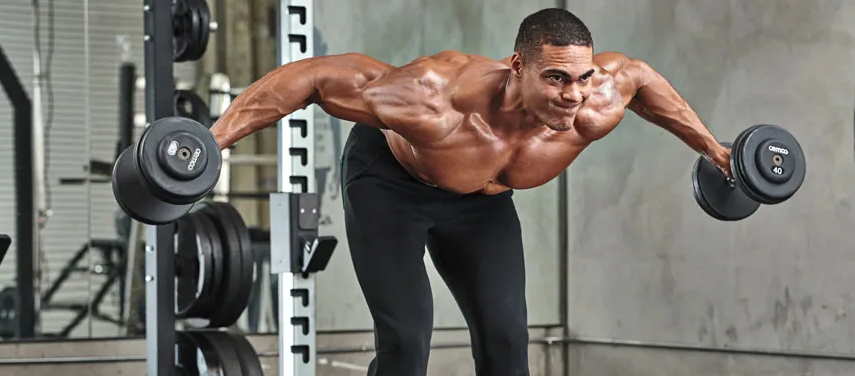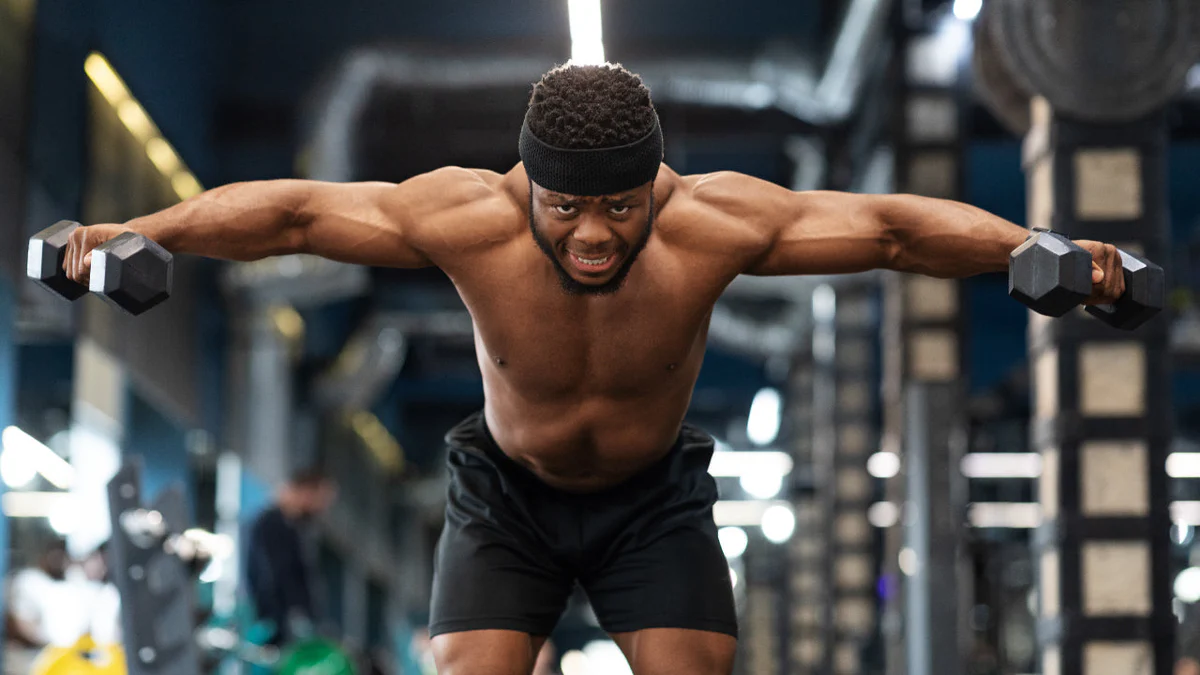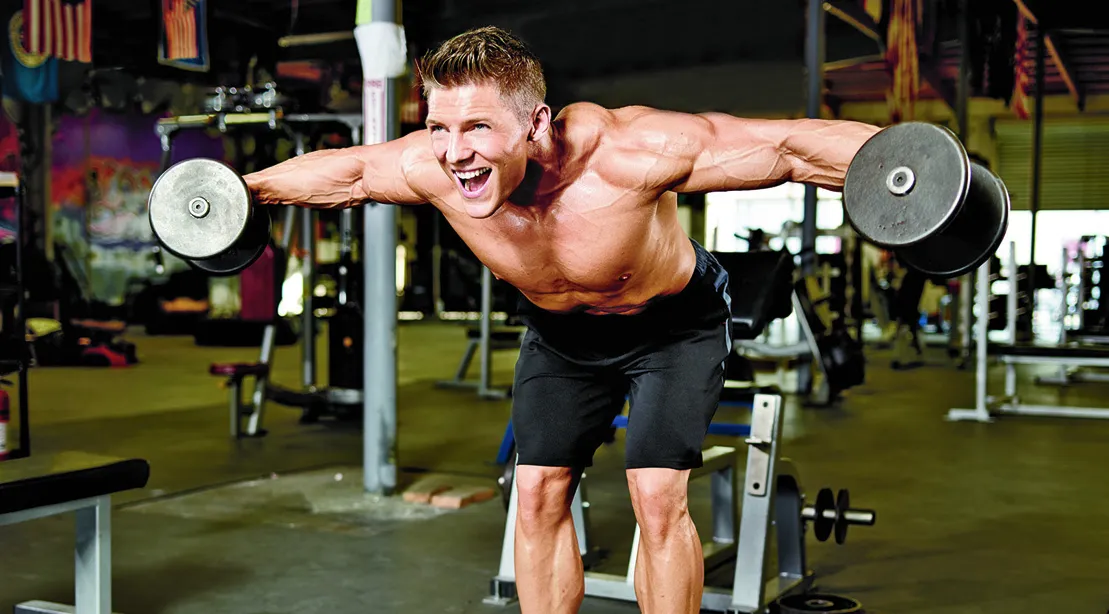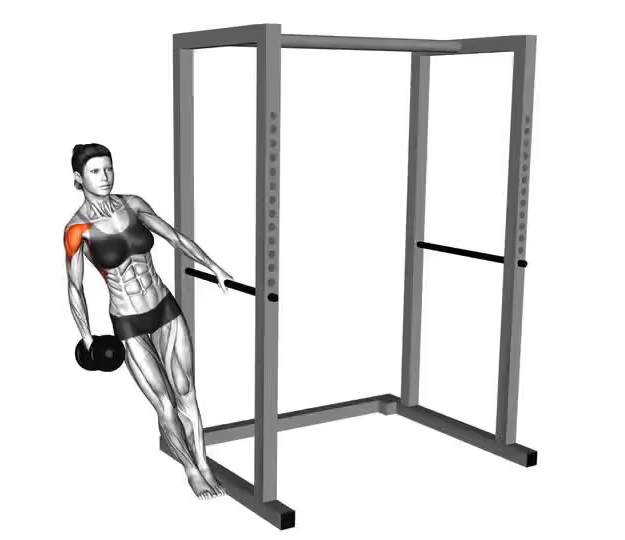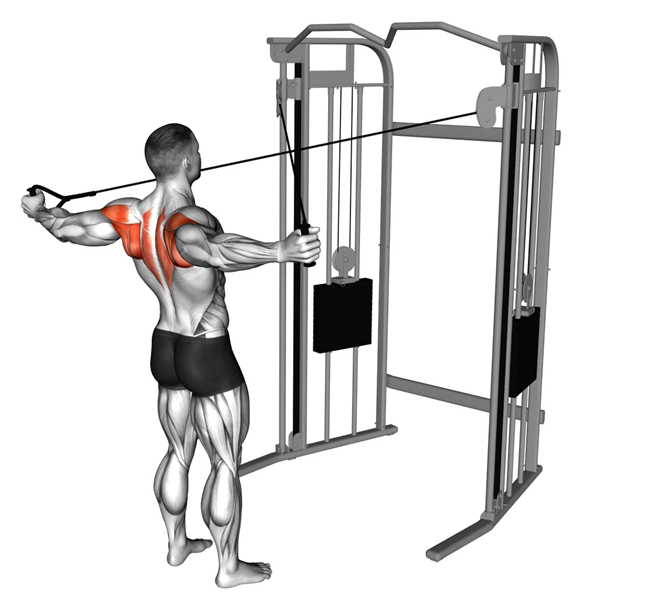Dumbbell Rear Delt Fly: Build 3D Shoulders and Bulletproof Upper Back
Most lifters hammer front delts and side delts with presses and raises, but the rear delts often get left behind. The result? Rounded shoulders, weak posture, and a physique that looks impressive from the front but flat from the back.
If you want shoulders that pop from every angle and a balanced upper body that screams power and aesthetics, you need to train your rear delts hard—and consistently.
Enter the Dumbbell Rear Delt Fly. This isolation exercise directly targets the posterior deltoid, a muscle group that rarely gets enough attention.
Unlike presses or front raises, this movement pulls the shoulders back, opens the chest, and creates that dense, 3D look bodybuilders chase.
This article breaks down everything you need to know about the Dumbbell Rear Delt Fly: how to perform it, why it’s essential, common mistakes, variations, programming strategies, and practical bodybuilding tips to unlock maximum growth.
Muscles Worked
The Dumbbell Rear Delt Fly is a rear delt isolation exercise, but it engages several stabilizers to control the motion.
- Primary Muscle:
- Posterior deltoid (rear delt) – shoulder horizontal abduction, the star of the show.
- Secondary Muscles:
- Rhomboids – retract scapula.
- Middle trapezius – stabilize and retract scapula.
- Lower trapezius – help control scapular depression.
- Rotator cuff muscles – stabilize shoulder joint.
👉 Translation: The Dumbbell Rear Delt Fly not only builds rounded rear delts, it also improves posture, balances pressing volume, and strengthens the upper back.
How to Perform the Dumbbell Rear Delt Fly (Step by Step)
Setup
- Grab a pair of light-to-moderate dumbbells.
- Stand with feet hip-width apart.
- Hinge forward at the hips until torso is almost parallel to the floor.
- Let dumbbells hang under shoulders, palms facing each other.
- Keep a slight bend in the elbows.
Execution
- Brace your core and lock shoulders down and back.
- Leading with elbows, raise dumbbells out to the sides in a wide arc.
- Stop when elbows are at shoulder height—don’t shrug upward.
- Squeeze rear delts at the top for a brief pause.
- Lower slowly back to start, keeping tension.
Breathing
- Inhale at the bottom.
- Exhale as you lift dumbbells.
Tempo Recommendation
- Up (concentric): 1–2 seconds.
- Pause: 1 second at top.
- Down (eccentric): 3 seconds.
Why the Dumbbell Rear Delt Fly Is Essential
- Balances Press-Dominant Training
- Presses overdevelop front delts and chest, leaving rear delts lagging. This move fixes that.
- Improves Shoulder Health
- Strong rear delts stabilize the joint and protect against impingements.
- Builds 3D Shoulders
- Rear delts add depth from the side and roundness from the back—key for bodybuilding aesthetics.
- Enhances Posture
- Pulls shoulders back, fighting desk posture and slouching.
Common Mistakes and Fixes
- Using Too Much Weight
- Mistake: Swinging dumbbells with traps and momentum.
- Fix: Use lighter weights and strict form. Rear delts need tension, not ego-lifting.
- Shrugging Shoulders
- Mistake: Letting traps take over.
- Fix: Keep shoulders depressed, focus on elbows moving outward.
- Overbending Elbows
- Mistake: Turning it into a row, hitting lats instead.
- Fix: Keep only a slight bend, elbows lead out, not back.
- Cutting Range of Motion
- Mistake: Only raising halfway up.
- Fix: Elbows should reach shoulder height—full arc for maximum contraction.
- Rushing the Eccentric
- Mistake: Dropping dumbbells fast.
- Fix: Control the lowering—rear delts respond to tension.
Variations and Alternatives
- Seated Rear Delt Fly
- Sit on a bench, torso over thighs—adds stability, reduces cheating.
- Incline Bench Rear Delt Fly
- Chest supported on bench—perfect for strict isolation.
- Prone Rear Delt Fly
- Face-down on an incline bench, eliminates momentum.
- Cable Rear Delt Fly
- Constant tension through full range.
- Reverse Pec Deck Machine
- Great beginner-friendly alternative with fixed path.
Programming Guidelines
For Strength (Performance-Oriented Lifters)
While not a heavy lift, strengthening rear delts improves pressing stability and scapular health.
- Sets/Reps: 3–4 sets of 8–12 reps.
- Rest: 90 seconds.
- Load: Moderate, controlled.
- Placement: After compound pulls (rows, pull-ups).
For Hypertrophy (Bodybuilding Focus)
The rear delt fly thrives on volume and strict form for maximum growth.
- Sets/Reps: 3–5 sets of 12–20 reps.
- Tempo: Slow eccentric, strong peak squeeze.
- Rest: 45–75 seconds.
- Techniques: Drop sets, partials, mechanical drop sets (move from dumbbells → cables → machine).
Sample Rear Delt Hypertrophy Finisher
- Dumbbell Rear Delt Fly: 3×15–20
- Cable Rear Delt Fly: 3×12–15
- Face Pulls: 3×12–15
👉 This burnout sequence torches the rear delts, guaranteeing growth and balance.
Bodybuilder’s Tips
- Think elbows, not hands. Drive elbows wide, not dumbbells up.
- Light weight, high tension. Rear delts respond best to control, not brute force.
- Add pauses. 1–2 second squeeze at top cements contraction.
- Sequence smart. Train rear delts at end of push days or after back work.
- Weekly volume: Aim for 12–20 sets/week across variations for maximum growth.
Strength vs Aesthetic Outcomes
- Strength Athletes: Rear delt flies build stability for presses, deadlifts, and Olympic lifts by reinforcing scapular control.
- Aesthetic Athletes: This is where the magic happens—rear delt flies are a key builder of capped, 3D delts. A thick rear delt rounds out the shoulder from every angle.
👉 Neglecting rear delts kills symmetry. Hitting them hard with dumbbell rear delt flies corrects imbalances and enhances shoulder aesthetics dramatically.
Practical Takeaways
- The Dumbbell Rear Delt Fly is the foundation rear delt builder—simple, effective, and essential.
- Focus on form and control, not heavy weights.
- Use high reps and volume for maximum hypertrophy.
- Pair with cables and machines for variety and constant tension.
- Build up to 12–20 sets weekly across rear delt exercises to see real growth.
Conclusion
The Dumbbell Rear Delt Fly is the unsung hero of shoulder training. While front and side delts get all the attention from presses and lateral raises, it’s the rear delts that complete the picture—adding width, depth, and balance.
For strength athletes, it’s a stability builder. For bodybuilders, it’s the ultimate sculpting tool for 3D, boulder shoulders.
👉 If you’re serious about building a balanced, aesthetic physique, make the Dumbbell Rear Delt Fly a staple in your training. Keep it strict, keep it controlled, and let the rear delts catch up to the rest of your shoulders.

